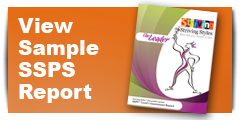PERSONAL GROWTH
“Who are you meant to be Quiz” vs. the Striving Styles Self-Assessment.
I wanted to start the Striving Styles Blog by explaining the differences between the Striving Styles Self Assessment and the Quiz in the November issue of The Oprah “O” Magazine. The people at O approached me mid August as they were looking for someone who could put together a quiz to help people find out who they were meant to be. I had 10 days to write the quiz and the descriptions for each of the types. Fortunately, I had much of the groundwork completed.
The main differences in between the “Who Are You Meant to Be” Quiz and the Striving Styles Self Assessment is the length of each quiz, the number of Striving Styles and the accuracy of the assessments. The primary reason for the differences was because of the amount of space they had for the article in the magazine. They had been thinking of including 5 or 6 different styles of people. We were able to include 7 and we had to leave one out. They had a limit of 30 questions for the quiz so I cut down the questions from the 64 in the Striving Styles Self Assessment. The longer assessment and tends to have greater accuracy, although people report being impressed with how accurate the O Quiz was.
During the past several years, I had been researching how emotional energy and personality type worked together. While I have used Psychological Type (Myers-Briggs Type Indicator) in my work with individuals, teams and organizations, I recognized its limitations. It determines predictable behaviour based on functional preferences, but does not include how people use their emotional energy or whether they are self-aware or self-protective. This is extremely important as people can behave noticeably different based on which of the two is their objective.
Along with my associate, Heather Hilliard, at Caliber Leadership Systems, we began using the Emotional Quotient Inventory with the MBTI when conducting assessments to try to get a sense of where a person’s emotional energy would most likely be used. Although it vastly improved our ability to interpret emotional and social functioning within each type, there was a good degree of inaccuracy. Most people do not know the difference between their thoughts, value judgments and emotions and would score themselves based on what they thought they were like instead of what they were actually like. In addition, it increased the cost of the assessment substantially.
The Striving Styles System is based on the premise that each of us is born with a dominant pattern of energy or Striving Style that determines what our predominant need or striving is and how we will behave in order to get that need met. In addition to this, our emotional maturity, life experience, conditioning and stress levels determine whether we are more focused on self-actualizing or on self-protection. Although we have access to all 8 Striving energies, we have four that we tend to use most. We need more conscious thought and energy to use those we least prefer.
The Striving Styles Blog is to help people understand the Striving Styles System and its applications for:
- SELF-AWARENESS; help people understand themselves, how they are most likely to behave when self activating or when they are self-protective.
- EMPATHY: help people better understand others.
- PERSONAL EFFECTIVENESS: help people learn to use their particular striving style to their own best advantage in dealing with others.
- SELF-FULFILMENT: help people improve their ability to get their needs met.
- RELATIONSHIP SATISFACTION: gives real understanding of reactions and behaviour patterns that cause difficulty, conflict and pain within relationships.
- PARENTING: enables parents to better understand their children.
- COUNSELLING\COACHING: invaluable for those in counselling, therapeutic, or healing professions including traditional medical fields.
- WORKING RELATIONSHIPS: improves working relationships.
- WORKPLACE EFFECTIVENESS: increases understanding in the workplace.
At the end of the Who Are You Meant to Be Quiz, there are descriptions of each of the Striving Styles that are about 3 paragraphs long. However, you can get more information about your Striving Style by going to my website, annedranitsaris.com. These reports are approximately 20 pages long with information about how each style is at home, at work, in relationship, during stress, and much more.
It is my hope that by helping people build greater awareness of their primary needs, helping them recognize the difference between self-actualizing and self-protective behaviours in their personality, they can gradually learn to shift from just surviving to striving to be the person they are meant to be.
I welcome your comments, questions and input and hope you will follow the Striving Styles Blog to support you in your growth and development.



















0 Comments